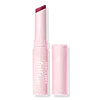What's inside
What's inside
 Key Ingredients
Key Ingredients

 Benefits
Benefits

 Concerns
Concerns

 Ingredients Side-by-side
Ingredients Side-by-side

Caprylic/Capric Triglyceride
MaskingC10-18 Triglycerides
EmollientDiethylamino Hydroxybenzoyl Hexyl Benzoate
UV FilterEthylhexyl Methoxycinnamate
UV AbsorberDibutyl Adipate
EmollientC12-15 Alkyl Benzoate
AntimicrobialDicaprylyl Carbonate
EmollientBis-Ethylhexyloxyphenol Methoxyphenyl Triazine
Skin ConditioningGlyceryl Stearate
EmollientCocos Nucifera Oil
MaskingGlyceryl Behenate
EmollientEthylhexyl Triazone
UV AbsorberHydrogenated Castor Oil
EmollientTocopherol
AntioxidantParfum
MaskingAscorbyl Palmitate
AntioxidantBHT
AntioxidantStevia Rebaudiana Extract
Caprylic/Capric Triglyceride, C10-18 Triglycerides, Diethylamino Hydroxybenzoyl Hexyl Benzoate, Ethylhexyl Methoxycinnamate, Dibutyl Adipate, C12-15 Alkyl Benzoate, Dicaprylyl Carbonate, Bis-Ethylhexyloxyphenol Methoxyphenyl Triazine, Glyceryl Stearate, Cocos Nucifera Oil, Glyceryl Behenate, Ethylhexyl Triazone, Hydrogenated Castor Oil, Tocopherol, Parfum, Ascorbyl Palmitate, BHT, Stevia Rebaudiana Extract
Cocos Nucifera Oil
MaskingOlea Europaea Fruit Oil
MaskingMango Butter Dimer Dilinoleyl Esters/Dimer Dilinoleate Copolymer
EmollientCera Alba
EmollientGlycerin
HumectantHelianthus Annuus Seed Wax
Skin ConditioningPolyhydroxystearic Acid
EmulsifyingStearyl Behenate
EmollientRicinus Communis Seed Oil
MaskingPolyglyceryl-6 Polyhydroxystearate
EmulsifyingPolyglyceryl-6 Polyricinoleate
EmulsifyingSilica
AbrasiveAroma
Polyglycerin-6
HumectantTocopherol
AntioxidantAlumina
AbrasiveGlycine Soja Oil
EmollientAscorbyl Palmitate
AntioxidantLimonene
PerfumingLinalool
PerfumingCI 75470
Cosmetic ColorantCI 77891
Cosmetic ColorantCI 77491
Cosmetic ColorantCocos Nucifera Oil, Olea Europaea Fruit Oil, Mango Butter Dimer Dilinoleyl Esters/Dimer Dilinoleate Copolymer, Cera Alba, Glycerin, Helianthus Annuus Seed Wax, Polyhydroxystearic Acid, Stearyl Behenate, Ricinus Communis Seed Oil, Polyglyceryl-6 Polyhydroxystearate, Polyglyceryl-6 Polyricinoleate, Silica, Aroma, Polyglycerin-6, Tocopherol, Alumina, Glycine Soja Oil, Ascorbyl Palmitate, Limonene, Linalool, CI 75470, CI 77891, CI 77491
Alternatives
Ingredients Explained
These ingredients are found in both products.
Ingredients higher up in an ingredient list are typically present in a larger amount.
Ascorbyl Palmitate is created by combining pure Vitamin C and palmitic acid. It is an antioxidant and helps reduce hyperpigmentation.
This ingredient is a more stable version of Vitamin C, meaning it does not disintegrate as quickly when exposed to sunlight. However, studies show it does not penetrate skin as well as pure Vitamin C.
Ascorbyl Palmitate is oil soluble.
Read more about other types of Vitamin C:
Learn more about Ascorbyl PalmitateCocos Nucifera Oil is obtained from the kernels of the coconut fruit. In other words, this is coconut oil.
Coconut Oil is rich in fatty acids with lauric acid making up the majority of these. It also contains linoleic acid. Due to this high fatty acid content, coconut oil helps trap moisture and soften skin.
Despite being antibacterial, coconut oil may not be great for acne-prone skin. It is comedogenic and may clog pores. This ingredient may not be safe for malassezia or fungal acne.
Note: Coconut Oil should not replace your sunscreen for UV protection. Studies show it only blocks about 20% of UV.
This oil is non-volatile and has a light scent.
The term 'fragrance' is not regulated in many countries. In many cases, it is up to the brand to define this term. For instance, many brands choose to label themselves as "fragrance-free" because they are not using synthetic fragrances. However, their products may still contain ingredients such as essential oils that are considered a fragrance.
Learn more about Cocos Nucifera OilTocopherol (also known as Vitamin E) is a common antioxidant used to help protect the skin from free-radicals and strengthen the skin barrier. It's also fat soluble - this means our skin is great at absorbing it.
Vitamin E also helps keep your natural skin lipids healthy. Your lipid skin barrier naturally consists of lipids, ceramides, and fatty acids. Vitamin E offers extra protection for your skin’s lipid barrier, keeping your skin healthy and nourished.
Another benefit is a bit of UV protection. Vitamin E helps reduce the damage caused by UVB rays. (It should not replace your sunscreen). Combining it with Vitamin C can decrease sunburned cells and hyperpigmentation after UV exposure.
You might have noticed Vitamin E + C often paired together. This is because it is great at stabilizing Vitamin C. Using the two together helps increase the effectiveness of both ingredients.
There are often claims that Vitamin E can reduce/prevent scarring, but these claims haven't been confirmed by scientific research.
Learn more about Tocopherol